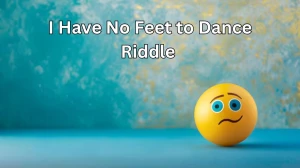Never Resting, Never Still, Moving Silently From Hill To Hill Riddle
by
Updated Jun 20, 2024

Never Resting, Never Still, Moving Silently From Hill To Hill Riddle Explanation
Riddles are designed to entertain and engage people, often used in social settings for fun and intellectual stimulation. The answer to this riddle hints at something essential for life on Earth. It provides warmth and light during the day and moves across the sky from morning until evening. You can see its effects but cannot touch it directly. It casts shadows and can change the appearance of the landscape as it moves.
The riddle is:
Never resting, never still.
Moving silently from hill to hill.
It does not walk, run or trot.
All is cool where it is not.
Hints
Below are some hints given to crack the answer.
- It is something that is part of our daily life and visible in the sky.
- It moves across the sky from morning until evening.
- It affects the entire landscape, illuminating different parts as it travels.
- It provides light and warmth.
- You can see its effects moving over hills, mountains, and fields, but you can't hear it.
Never Resting, Never Still, Moving Silently From Hill To Hill Riddle Answer
The answer to the riddle is: Sunshine
- Never resting, never still: The sun, or the effect of its rays (sunshine), is constantly in motion relative to the Earth. The sun rises in the east and sets in the west, creating a continuous, unending journey across the sky.
- Moving silently from hill to hill: The sunlight or sunshine moves over the landscape, illuminating hills, valleys, and plains without making any noise. This gives the impression of moving silently from one hill to another as the day progresses.
Thus, sunshine is a fitting answer because it encapsulates the idea of the sun's rays moving across the earth, covering different terrains in a silent and continuous manner.
What are Riddles?
Riddles are puzzles or problems involving a question or statement with a hidden meaning that requires thought and ingenuity to solve. They are designed to challenge the solver’s creativity, logic, and critical thinking skills. Riddles are often presented in poetic or metaphorical language, adding to their complexity and charm. They can be used for entertainment, education, and mental exercise.
They frequently involve puns, metaphors, and other forms of wordplay, requiring the solver to think beyond the literal meanings. The primary purpose of a riddle is to challenge the solver’s wit and problem-solving skills.




